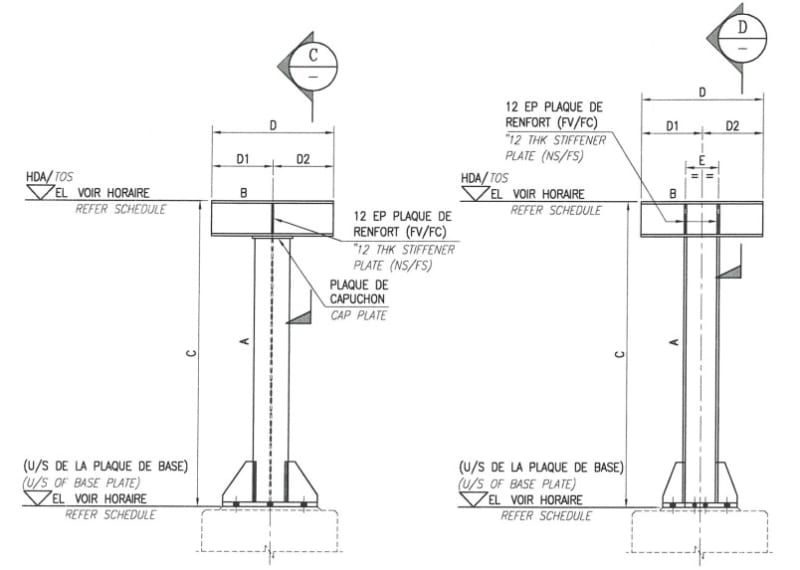I tend to end up using the second one more than the first, but that's just because it feels nicer to me with the flange load paths aligning better. I can count the number of times where a preference between these two orientations has significantly mattered on my fingers and it's always really application specific. Other times, there's a bias towards one orientation, but it's not much of a cost impact either way. Honestly, I'm usually sizing these types of supports partially based on what's visually acceptable. There's generally a lot of capacity in them for the types of loads they'll see. Reasons for bias in one direction might include some of the following things. A deflection criteria from the piping stress team might bias you in one direction or the other. There may be constraints based on the connections below (for instance, aligning the column web with the web of the supporting beam may make bolting easier). You may also have a directionality based on piping restraints (directional stops, anchors, guides, etc.) You also might have unbalanced load based on different sized pipes either side of center.
I agree that theoretically, case one is better for a greater number of vertical support cases, as the pipe friction likely tends axial to the pipe, but it's not a given as that may change near corners or in certain other situations, so I would generally apply friction load in both directions for design unless I'm working really hard on the support. So it still doesn't really matter that much.
Basically, it rarely matters and do whatever feels better for the given situation based on your understanding of the design conditions.

